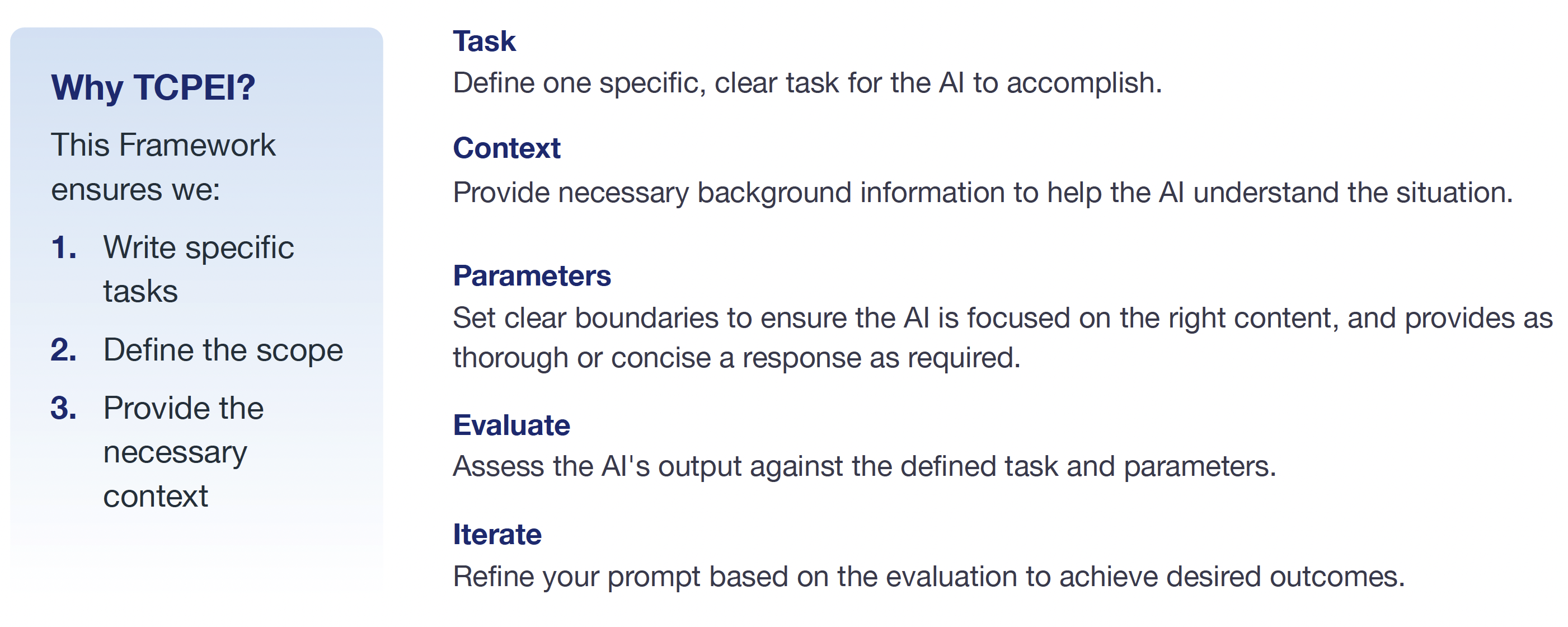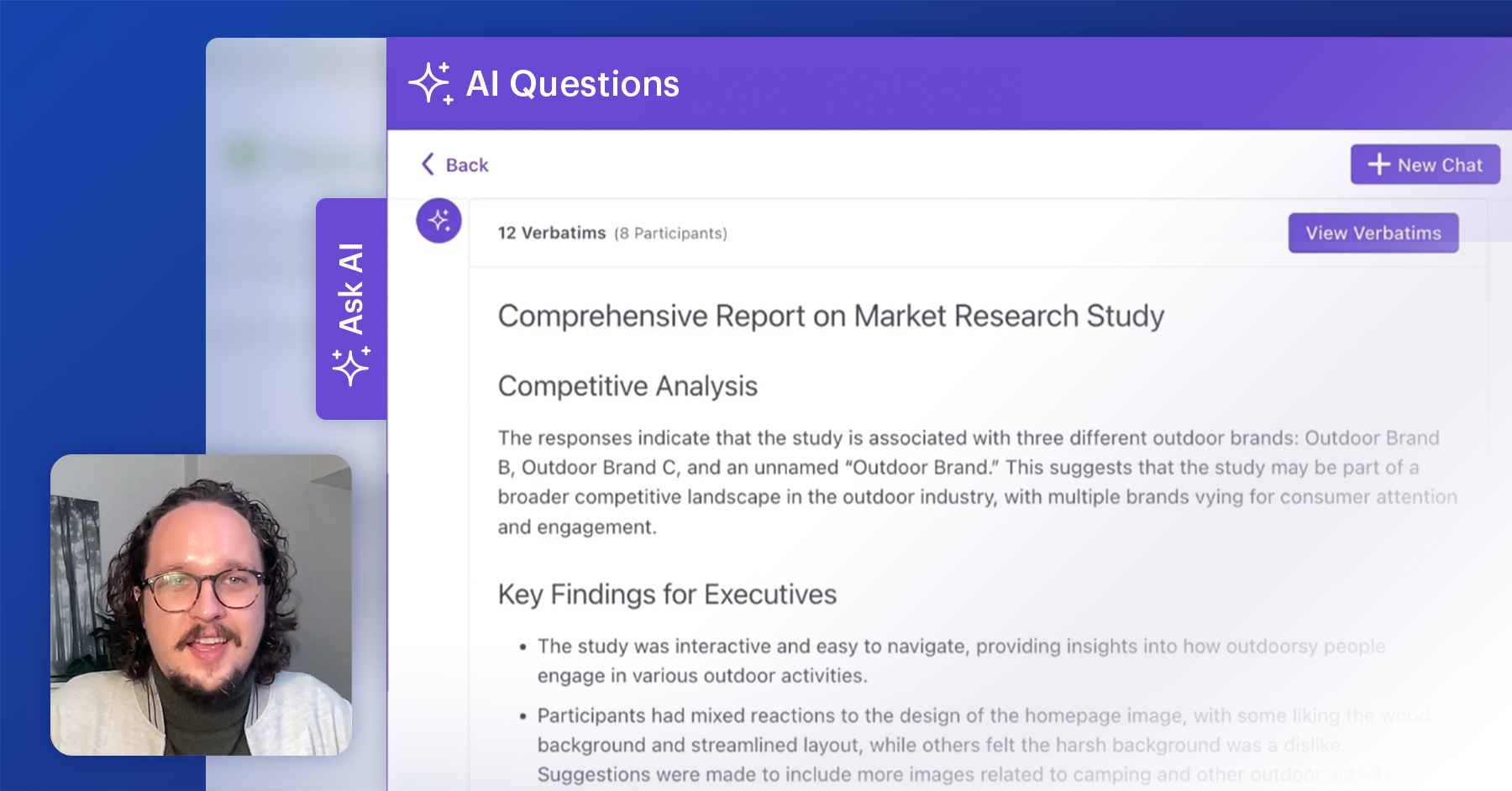Step One: Follow the Guiding Principles
Before diving into frameworks, it's important to remember these three golden rules when writing prompts in Recollective's Ask AI:
- Be specific and clear: Ask one thing at a time and phrase it plainly.
- Define the scope: Tell Ask AI what level of detail or format you need (summary, bullet points, executive-ready).
- Give context: Let Ask AI know the situation. Treat it as you would a human colleague—share background and purpose.
These principles ensure Ask AI can interpret your request correctly, setting you up for stronger outputs.

Framework: TCPEI
The TCPEI Framework provides a simple, repeatable structure for every prompt:
- Task – Give one clear, specific task.
- Context – Share the background or study details Ask AI should factor in.
- Parameters – Define boundaries, like length, style, or which segment to analyze.
- Evaluate – Evaluate the output against your task and parameters, and check the AI's reasoning by reviewing the Verbatims
- Iterate – Refine your prompt if needed, adjusting scope, clarity or detail
Think of TCPEI as your safety net. It helps you move from vague tasks and generic outputs to structured prompts that deliver targeted, consistent value.

Iterate in Four Steps
Sometimes, even the best prompt needs refining. That’s where the Four Steps to Iterate come in:
- Revisit the prompt & framework – Did you include task, context, and parameters.
- Split it up – Use prompt chaining: break a big request into smaller, sequential ones.
- Add constraints – Narrow the scope with more parameters (e.g., focus on a single activity).
- Rephrase or analogize – Try different wording or ask for an equivalent task.
What's Different About Recollective Ask AI
Unlike external AI tools, Ask AI is built for researchers. That means:
- It knows your study context from the objectives you set.
- It can distinguish participants from moderators, ensuring cleaner insights.
- It supports segment-level analysis, making comparisons simple.
- It lets you validate outputs via verbatims, building trust in the results (this means you can start analysis from the very first participant response, scale with confidence and avoid the pitfalls of “flat” exported data.)
Quick Reference
- Always: Be specific, define scope, give context.
- Use TCPEI: Task → Context → Parameters → Evaluate → Iterate.
- Iterate in Four Steps: Revisit → Split it Up → Add Constraints → Rephrase.
- Remember: Ask AI is research-aware—it’s designed to work the way you do.
Closing Thought
The smartest insights come from blending AI’s efficiency with human intuition. With these frameworks in hand, you can spend less time reworking vague outputs and more time focusing on what matters—delivering rich, actionable insights to your stakeholders.
Watch the Webinar
Watch the full replay of the AI Masterclass webinar here.







.svg)
